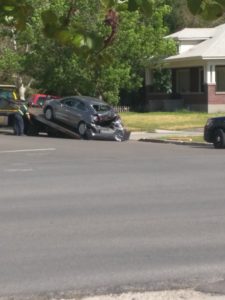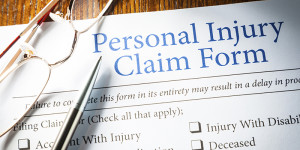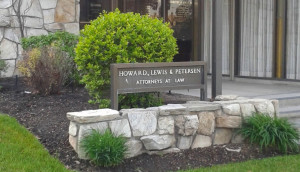A Utah Car Accident Happens:
Proper Car Insurance Selection. Before you even get into a car accident you should be selecting high and appropriate insurance coverages for yourself and in case you hurt someone else. These types of insurances called liability insurance and underinsured/uninsured coverages. Liability coverage is where you hurt someone else and your insurance covers that risk. Underinsured coverage is where the person who hurt you does not have enough insurance to cover your injuries and your own insurance kicks in to cover your injuries. Uninsured coverage is where the person who hurt you has no insurance at all, or it is a hit and run situation.
Regarding Utah’s “Personal Injury Protections Benefits (video link),” the state mandatory minimum $3,000. You should always get at least $10,000 in medical pay benefits. It is really cheap no-fault medical pay benefits that comes in handy when you get hurt–either through your own fault, or another. You can read my PIP article here and read the Utah State Statute here. [https://le.utah.gov/xcode/Title31A/Chapter22/31A-22-S306.html?v=C31A-22-S306_1800010118000101]
At minimum, your liability insurance coverage should match your asset exposure under Utah Exemptions Act. You can read what is exempt from collection on a Utah judgment here.
The Car Collision. How to Prove Fault.


If you are in a Provo Car Accident, hiring a personal injury will save you time and money and provide for better results.
Let’s say it is November 1, 2017. Utah’s first major snowstorm is fading away and roads are terrible. You are driving on State Street in Orem, Utah, around the University Parkway.
Your Minivan comes to a complete stop and suddenly you feel a thrashing from behind. You black out momentarily and come to a tad bit into the intersection. Your neck is burning, something around your chest, your right upper shoulder feels weird and you can feel adrenaline pumping.
The Police Arrive.
The Orem City police arrive. They investigate and notice the driver that rear-ended you was drunk and didn’t have a driver’s license in the first place. The offending driver is arrested and the ambulance takes you to the Utah Valley Hospital Emergency room for trauma care. See this article on how to get your police report.
Ambulance–ER Visit–Physical Therapy.
At the emergency room x-rays are ordered. The doctor prescribes some pain prescriptions and give you a referral for physical therapy for neck-back strain/sprains and chest bruising (contusion). Thereafter you report to your physical therapist and begin a course of physical therapy care three times per week.
After four weeks of physical therapy your low back and neck are still hurting and an MRI of your neck and low back are ordered by your family practice doctor who is working in conjunction with your physical therapist.
Insurance Adjuster Interviews.


About three days after the car collision you start receiving phones calls from the several different types of insurance adjusters wanting an interview and information regarding your injuries and property damage loss. It is overwhelming trying to heal and deal with a host of new people in your life–all demanding information. They want to know your lost wages, if any, and both of them want you to sign a medical release so they can view all of your medical records. Related or not to the car collision.
You give an interview with two adjusters. One is from your own car insurance company and the other adjuster is from the at-fault driver’s insurance company. You don’t know if you have to do this or not. Either way you have now given under oath statements to insurance adjusters without the advice of an experienced personal injury attorney. Potentially to your detriment.
As the weeks go by, you receive a letter from the at-fault carrier offering a $750 total cash settlement for your physical injuries, in addition to your car damage. So many people take this offer without consulting a car accident personal injury lawyer. You decide to speak with a lawyer.
Hiring a Personal Injury Car Accident Attorney.
At this time things are getting a bit out of control and taking over too much of your life. Your medical bills are racking up and you do not have private health care insurance. Your children still need attending too and your household duties as the mother care giver are clearly impaired.
SEE this VIDEO on how to pick the best personal injury attorney for your Utah car accident.


Contact car collision attorney Jake Gunter at (801) 373-6345
Don’t Hire a Dabbler.
You seek out a Utah personal injury car accident attorney through family friends. You end up hiring a specialists in car accidents, not a general practice attorney who claims to handle lots of car accident cases, but really only handles a few each year. He is mostly a divorce attorney.
Personal Injury Protection Benefits (video)
Immediately, the attorney educates you about Utah’s first party Personal Injury Protections Benefits (“PIP”). You didn’t even realize that your own Utah car policy of insurance had mandatory $3,000 medical pay benefits that help you pay for medical care that is related to the car accident. Nor did you realize that your family practice doctor should have assessed your impaired ability to perform household services because of the car accident and given you a doctor’s note so that your own PIP benefits would start paying the $20 per day for lost household services. Your personal injury attorney immediately starts the application process to get your PIP benefits flowing.
Reaching Maximum Medical Improvement (“MMI”).
After retaining the personal injury car accident attorney, you move your attention to getting better. You and your family practice doctor have medical discussions about your health and how long you should treat before you reach maximum medical improvement (“MMI”). MMI is where the treating doctor has done all they can do for you. You either have fully resolved your injuries and are completely healed or you are stagnant and no further medical care from that provider will help. At MMI you will need to accept the situation, or move up the ladder of progressively more invasive physical medicine (rehab medicince). This could mean looking at surgical options, cortisone injections, nerve burning or pain management prescriptions.
At this point your MRI doesn’t indicate any positive disc injuries, such as a disc herniation, angular instability, or disc bulges, to name a few. You opt to close our your medical treatment and accept that there will always be some discomfort in your low back, but especially your neck from ligament laxity. Ligament laxity injuries are like rubber bands that when new they are very stretchable, but when the rubber bands (i.e. muscles/ligaments/tendons) get older, or are stretched beyond the normal range of motion, they will never return to what they used to be.
At this point your medical bills are the following:
—-Ambulance: $900
—-Emergency Room: $1,700
—-Family Doctor. $620
—-Physical Therapy $3,400
—-MRI Low Back: $1,500 (Lien Basis)
—-MRI Neck: $1,500 (Lien Basis)
TOTAL MEDICAL BILLS: $9,620


Car accident attorney Jake Gunter is a partner at Howard Lewis & Petersen, PC primarily practicing Utah car accident law.
Asserting a Personal Injury Car Accident Insurance Claim.
You have now reached MMI and are ready to make an insurance claim for compensation for your bodily injuries, lost wages, lost household duties and other types of damages relevant to the case.
Asserting a personal injury insurance claim requires a demand letter that outlines who is at fault, how that person caused your injuries and what your injuries are. The types of injuries, whether economic or physical can vary case to case. But typically there are medical bills, lost wages, physical injury and impaired capacity to work. How your personal injury lawyer measures and captures these injuries matters greatly. The client involvement in this process is also important. Some client’s do not have the capacity to understand how to capture these injuries and damages. The client’s capacity to capture, follow through and document their injuries makes all the difference in a personal injury case.
When a car accident demand letter is received by the insurance company it is first processed into complicated computer software. The software takes into consideration the care, the injuries and a host of other facts. The are many, many value drivers that these computer software programs use in asserting a personal injury case’s value. Once the software processes the claim, a value range is given to the bodily injury insurance adjuster to start negotiations from.
Negotiations.
After the insurance claim is submitted by Utah insurance regulation, the insurance carrier has 28 days to acknowledge the claim. See this helpful page of Utah insurance regulation promulgates the Utah Insurance Department.
Often the insurance adjusters are very busy and miss their 28 day deadline. At this point your personal injury attorney enters into negotiations with your claim’s strong points. The attorney will detail to the insurance adjuster how your injuries were documented and validated by appropriate medical doctors.
Timely car accident lawyers will try to reach a settlement within one month. The attorney should either settle the case, or file suit. These types of cases are already time consuming and there is no reason to go back and forth for an unnecessary time. A short turn cycle on small car accident cases is about 4-6 months. For more serious injuries or litigation, think about a year plus.
Lien Tracking and Reduction Resolution. See this Video on Why Liens are Important.
From the start of asserting your insurance claim for compensation your attorney will be tracking any and all types of medical liens that are attached to your eventual compensation. See my former articles for more information on liens and personal injury protection benefits.
You must know your lien count. Meaning how much money in liens are there, who is asserting them and how does the total amount of liens impact your ability settle or try the case. For example, if you were involved in a car accident with multiple fractures you would be attending the emergency room. If the emergency room medical lien was $20,000 but the at-fault driver’s insurance policy limits are $25,000, that leaves nothing in compensation for the injured party. In this situation, obviously you are looking to your insurance carrier’s underinsured policy for further relief, but your personal injury attorney should be approaching the hospital with creative ways to reduce the hospital lien, settle the case and get your clients some compensation. This often incurs 1/3-1/3-1/3, three way reduction. The hospital gets paid back 1/3 of the total settlement with a release of all other bills. The client’s receives 1/3 of the total settlement in compensation and the attorney receives his legal fees and costs on the case.
Even after a case is settled, liens can sometimes take one year to reduce and find a mutually agreeable resolution of them. Without resolving liens, the attorney, the law firm and the client can get sued in court for their failure to pay the liens out of the settlement proceeds.
Settlement.
You are either going to settle the case with a compromised amount of compensation or you will file a lawsuit.
If you settle, your attorney will have to resolve the liens, you will sign a settlement release for the insurance company and the at-fault party. Further most law firms will always have you sign a settlement ledger which dictates where the settlement proceeds are going to. This is where the personal injury attorney will be reimbursed for any costs fronted on the case for experts, trial costs, subpoenas, medial records requests or a host of other cost typical to personal injury cases.
Litigation–The Lawsuit.
Venue and Statutes of Limitations.
If the insurance settlement offers are not adequate and fair a lawsuit can be filed. The location of the lawsuit is generally the place where the wrongdoing occurred and statutes of limitations to sue the at-fault driver is generally four years in Utah. Although there are several exemptions which your personal injury attorney should diligently look for. You can also sometimes file in the county where the defendant resides at the time the lawsuit is filed.
Complaint and Answer.
First, the injured person’s personal injury attorney must draft a complaint which states the factual and legal basis for the lawsuit. No amount of compensation is required to be pled, just that this case fits a particular Utah Tier.
Second, the defendant must be personally served with the lawsuit or served in a manner approved by the judge. After service the defendant has 21 days to file with the court a written answer. The answer triggers the time lines for fact discovery to start.
Fact Discovery.
Initial Disclosures.
Depending on your tier structure that you pled, you will have 120 to 210 days of factual discovery. Almost immediately after fact discovery begins the parties will automatically exchange initial disclosures. These initial disclosures provide the names of all known people who may have any knowledge of the case, along with all exhibits of evidence known to either party. Failure to disclose these items in your initial disclosures will bar you from using them at trial. Up front loading and preparing of your initial disclosures is important because you will be under pressure to produce any and all evidence known to you. This is where the injured client really needs to help the personal injury attorney accumulate these items.
Expert Witness Discovery.
Even before fact discovery closes, the personal injury attorney is selecting his expert witnesses. Normally at least a medical expert will testify to the jury about the party’s physical injuries but also about how there were caused. Expert discovery has strict time lines and devastating results when you miss these deadlines, such as having your case dismissed or severely limited.
Expert witness cost a ton of money and sometimes you need several of them. Count on it that the insurance companies will have more money then the plaintiffs lawyers ever will. Common types of expert witnesses in personal injury cases are chiropractors, orthopedic surgeons, physical therapists, economists, life care planners, and accident reconstructionists. Not every case has all these experts, but generally ever case will need a medical expert to show causation of the injuries.
Summary Judgment Motions/Motions to Strike.
Generally, after fact and expert discovery closes, the parties make attempts to reduce down the other party’s defenses and claims. The same goes for experts. Each party will make motions to strike or restrict the testimony of the other party’s expert witness. These motions are time consuming and delay the case.
Pretrial Conference.
Once fact and expert discovery are completed, along with motion practice, generally one of the parties will move the court for a Rule 16 pretrial conference to obtain a jury trial date, along with pretrial motion in limine practice cutoffs.
Motions in Limine.
Once a jury trial date is set, the parties will begin filing motions in limine in an attempt to shape the course of the trial itself before the trial begins. Motions in limine are as varied as the weather can be. Generally, the insurance defense attorneys have a host of standard motions they file before trial. In addition to the stock motions, you will see tailored motions custom to the facts of the subject case.
Rule 26 Pretrial Disclosures.
28 days before the jury trials is scheduled, the parties exchange a witness list of those expected to be called and those witnesses they may call at trial. The same goes for exhibits. Any failure to disclose witnesses or exhibits at this stage nearly always requires exclusion of that evidence at the trial. Additionally, if you have objections to the evidence produced in the other party’s pretrial disclosures you must state your objections or forever waive them at trial.
The Jury Trial (Our Savior of Justice–The Jury)
Stress and nervousness is what you will feel. Even the most experienced attorneys will also feel stress and nervousness. That is the nature of a jury trial. The mechanics of inside a court room jury trial is for another blog post.
CONCLUSION
The turn cycle of a personal injury case at minimum is four months if you are lucky. Generally they take nearly one year. If litigation breaks out and lawsuit is filed, expect well over a year to resolve the matter.
